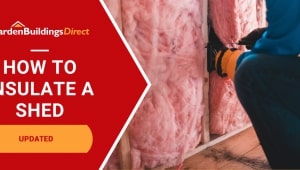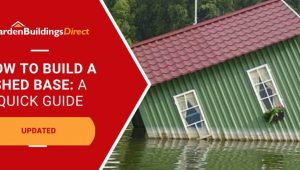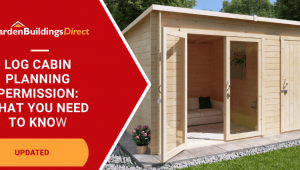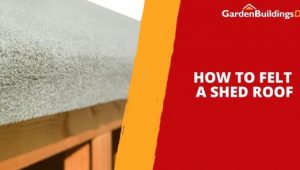Jump to:
Softwood is among the most commonly used materials in construction. A good example is spruce in garden buildings. Here’s what you need to know.
What is Spruce?
Spruce, scientifically known as Picea, is a type of evergreen conifer. From a visual standpoint, it’s light, from yellowish-white to reddish, with a subtle, silky sheen.
It darkens, taking on a brown tone, though, when exposed to sunlight. And if you take a closer look, you’ll notice its annual rings, creating a straight grain pattern.
In its tree form, Spruce has needle-like leaves that stay year-round, unlike broad-leaved varieties that shed theirs annually. This difference is one of the ways experts, like botanists, classify whether a tree is softwood vs hardwood. They don’t base it on how hard it feels but on the type of tree it comes from.
Spruce trees grow up to 60 meters high with straight, upright trunks. They’re grown in the Scandinavian parts of northern and central Europe.
Strengths and Benefits of Spruce Wood
Spruce has a medium density, around 470 kg/m³. This means it’s lightweight and more flexible than other timbers.
Working with it is straightforward—another point in its favour for builders and manufacturers. The wood also dries fast and resists cracking better than some alternatives, with less chance of warping or twisting.
One more thing about spruce is its reliability. The trees grow quite fast and straight, which in turn ensures a steady supply. This helps keep costs lower than some slower-growing softwoods, like larch. That’s why you’ll often find spruce as the main material in many quality garden buildings at reasonable prices.
But the advantages don’t stop here.
Spruce in Garden Buildings
Spruce pops up everywhere in garden rooms, from wooden sheds to summer houses and log cabins, to name a few, and for good reasons. Here’s how:
Framing
The frame holds everything above ground, so the timber needs to be strong but stays on the lighter side. Spruce ticks that box. It’s got enough strength to support the weight of the roof and walls without overloading the base.
For self-build kits or flat-packed sheds, that makes a real difference. It’s easier to put up and doesn’t need heavy-duty tools or fixings.
Cladding
Cladding needs to stay in place and keep out the weather. Spruce works well here because it’s stable. As mentioned, it doesn’t warp or twist as much as some other softwoods. That helps the boards stay flush and secure, so water can’t seep in and cause damage.
It also gives a clean, even finish outside, which matters if you’re putting the building somewhere visible, like a garden or allotment.
Panelling
Inside, spruce is a solid option for wall panelling. It has a smooth surface and a pale colour that takes stains, paints, and wood treatments well.
So, whether you want to keep the natural look, add a splash of colour, or protect it from damp, it gives you a lot of flexibility. This makes it a practical choice for hobby rooms or offices where you want the interior to look decent and hold up to use.
And why else?
Spruce is also easy to repair or replace if needed, such as swapping out the panels. It’s cost-effective too, being widely available. This helps if you’re trying to keep the budget sensible without going for low-grade timber.
So when you’re shopping for wooden summer houses, you know that if it’s spruce, you’re getting good quality materials.
Spruce vs Pine
Compared to pine, spruce doesn’t shrink or expand as much with changes in moisture (although it still needs to be protected with treatment). This helps keep your garden building stable and reduces the chance of gaps or warping over time. Spruce also has a more even texture and fewer knots than pine, which gives a cleaner, more uniform look.
Pine is a bit harder and denser, which can make it more durable in some cases. However, it tends to have more knots and an uneven texture. It can also be trickier to work with because it’s less flexible and can be tougher to cut or shape.
On the plus side, both grow quickly, which helps keep their prices reasonable. They’re both widely available, making them cost-effective options for garden buildings. The difference in cost comes down to local availability and demand rather than growth speed alone.
There are 2 ways to keep a spruce garden building unaffected by moisture: annual applications or paint or stain, or pressure treatment at the point of manufacture. Learn about pressure treatment.
Where to Buy Spruce Garden Buildings
All things considered, spruce ticks a lot of boxes for a quality garden building. If you’re exploring options, our BillyOh models are worth considering. They’re made from spruce grown in the Scandinavian regions of Europe, areas known for responsibly managed forests, many of which are certified by the FSC.
Take a look at our range of spruce log cabins for more while you’re here!





